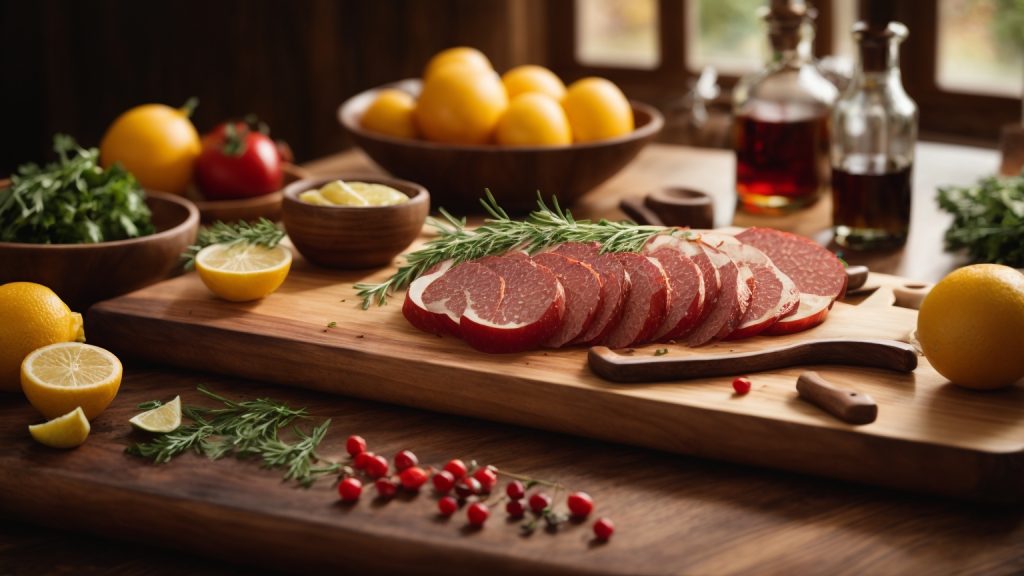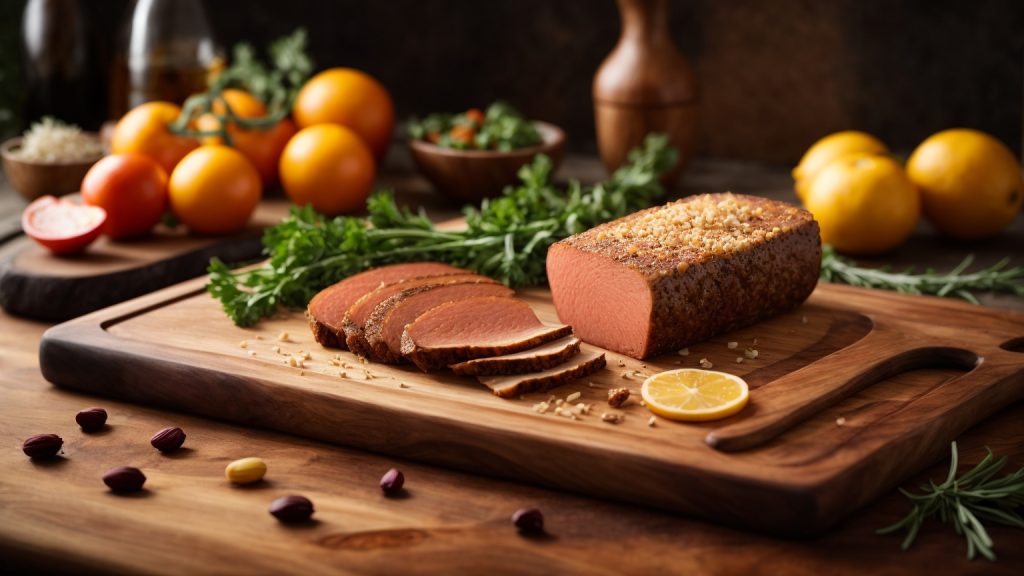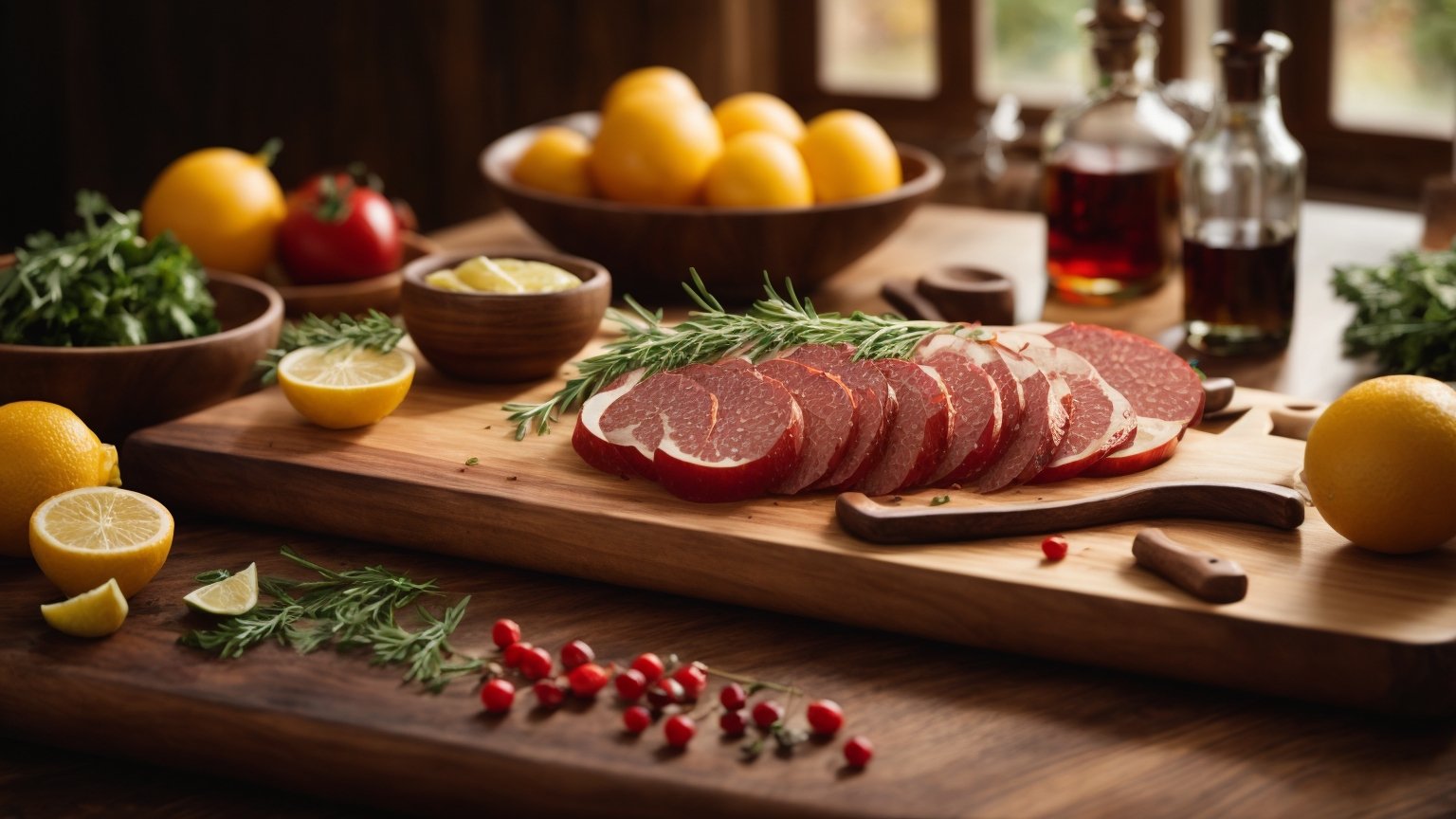Maintaining a wooden cutting board is crucial to ensure its longevity and prevent bacteria buildup. One of the most important steps in maintaining a wooden cutting board is oiling it regularly. Oiling a wooden cutting board helps to protect it from moisture, prevent warping, and keep it looking new.
To oil a wooden cutting board, you need to clean it thoroughly first. Use hot water and soap to wash both sides of the board, then let it air dry completely. Once the board is dry, apply a generous amount of food-grade mineral oil to the surface of the board. You can use a clean cloth or paper towel to spread the oil evenly on the board. Let the oil soak in for a few hours, or overnight if possible. Finally, wipe off any excess oil with a clean cloth before using the board again.
Regularly oiling your wooden cutting board will not only help to keep it looking new, but it will also protect it from bacteria buildup and prevent it from warping. It’s recommended to oil your wooden cutting board at least once a month, or more often if you use it frequently. With just a little bit of maintenance, your wooden cutting board can last for years to come.
Understanding the Importance of Oiling a Wooden Cutting Board

If you own a wooden cutting board, it is essential to take proper care of it. One of the most important things you can do to extend the life of your wooden cutting board is to oil it regularly. Here are some reasons why oiling your wooden cutting board is so important:
Prevents Drying Out and Cracking
Wooden cutting boards are prone to drying out and cracking over time. When you oil your cutting board, it helps to keep the wood moisturized and prevents it from drying out. This can help to prevent cracks from forming and can extend the life of your cutting board.
Protects Against Bacteria
Wooden cutting boards can harbor bacteria if they are not properly cleaned and maintained. When you oil your cutting board, it helps to create a barrier that can protect against bacteria and other harmful substances. This can help to keep your food safe and prevent contamination.
Enhances Appearance
Oiling your wooden cutting board can also enhance its appearance. The oil can help to bring out the natural beauty of the wood and give it a rich, warm glow. This can make your cutting board look more attractive and can add to the overall aesthetic of your kitchen.
Improves Durability
When you oil your cutting board, it can also help to improve its durability. The oil can help to strengthen the wood and make it more resistant to wear and tear. This can help to extend the life of your cutting board and ensure that it remains in good condition for years to come.
Overall, oiling your wooden cutting board is an essential step in its maintenance. By doing so, you can help to prevent cracking, protect against bacteria, enhance appearance, and improve durability. So, make sure to oil your cutting board regularly to keep it in good condition and ensure that it lasts for years to come.
Choosing the Right Oil
When it comes to oiling your wooden cutting board, there are several options to choose from. Here are a few popular choices:
Food-Grade Mineral Oil
Food-grade mineral oil is a popular choice for many people because it is odorless, tasteless, and doesn’t go rancid. It is also affordable and readily available. Mineral oil is a petroleum byproduct, so some people prefer to use a natural oil instead.
Beeswax
Beeswax is not technically an oil, but it is an excellent option for seasoning cutting boards. It repels water and forms a tight, protective seal. Beeswax can also add a nice luster to the wood and help extend the lifespan of your cutting board.
Coconut Oil
Coconut oil is a popular choice for those who prefer natural oils. It has natural antimicrobial properties and is a great moisturizer for the wood. However, some people find that it can go rancid over time and leave a coconut scent on the board.
Walnut Oil
Walnut oil is another natural option that is popular for its rich color and nutty aroma. It is also high in antioxidants and has natural antimicrobial properties. However, it can be expensive and may not be as readily available as other oils.
When choosing an oil for your cutting board, it is important to consider the pros and cons of each option and choose the one that best suits your needs and preferences. Remember to always use a food-grade oil and follow the manufacturer’s instructions for application and maintenance.
Preparation Before Oiling

Before you start oiling your wooden cutting board, it’s important to prepare it properly. This will ensure that the oil is absorbed evenly and that the board is protected from damage. Here are some steps to follow:
Cleaning the Board
The first step is to clean the cutting board thoroughly. Use warm water and dish soap to wash both sides of the board. Make sure to scrub any food particles or stains off the surface. Avoid using harsh chemicals or abrasive sponges, as they can damage the wood.
After washing the board, rinse it with clean water and dry it with a clean towel. Don’t forget to clean the edges and corners of the board as well.
Drying the Board
Once the board is clean, it’s time to dry it. Make sure the board is completely dry before you start oiling it. You can use a clean towel to dry it, or let it air dry for a few hours.
It’s important to dry both sides of the board evenly. If one side is wetter than the other, it can cause the board to warp or crack when you apply the oil.
You can also use a hair dryer or a fan to speed up the drying process. Just make sure not to overheat the board, as this can also cause damage.
By following these steps, you’ll ensure that your wooden cutting board is clean and dry before you start oiling it. This will help the oil absorb evenly and protect the board from damage.
Step-by-Step Guide to Oiling
If you want to keep your wooden cutting board in good shape, you need to oil it regularly. Here’s a step-by-step guide to oiling your cutting board:
Applying the Oil
- Choose the right oil: mineral oil, beeswax, or a combination of both are good options.
- Pour a generous amount of oil onto the board surface, starting with one side at a time.
- Use a clean cloth or paper towel to spread the oil evenly over the surface of the board. Make sure you cover the entire board, including the sides.
- Be careful not to use too much oil. You don’t want to see oil pooling up on the board, but you also don’t want to be too stingy.
Letting the Board Absorb the Oil
- Once you’ve applied the oil, let the board sit for at least 20 minutes to allow the oil to soak in.
- During this time, you can flip the board over and apply oil to the other side.
- If the board is very dry, you may need to apply a second coat of oil.
Wiping Off Excess Oil
- After the oil has had time to soak in, use a clean cloth or paper towel to wipe off any excess oil.
- Be sure to wipe the board thoroughly to prevent any excess oil from going rancid.
- Let the board sit for a few hours or overnight to allow the oil to fully absorb into the wood before using it again.
By following these simple steps, you can keep your wooden cutting board in great condition for years to come.
Frequency of Oiling
To keep your wooden cutting board in top condition, it is important to oil it regularly. But how often should you oil your cutting board? The answer depends on how frequently you use it and how much care you want to take.
As a general rule, you should oil your cutting board once a month. This will help to keep the wood moisturized and prevent it from drying out or cracking. However, if you use your cutting board frequently or if it is exposed to a lot of moisture, you may need to oil it more often.
You can tell if your cutting board needs oiling by looking at its surface. If the wood looks dry or dull, it is time to oil it. You can also try the water test: sprinkle a few drops of water on the board. If the water beads up and doesn’t soak in, the board is well-oiled. If the water soaks in quickly or leaves a dark spot, it’s time to oil the board.
In addition to regular oiling, you should also clean your cutting board after each use. Use a mild dish soap and warm water to clean the board, then rinse it thoroughly and dry it with a clean towel. Avoid soaking the board in water or putting it in the dishwasher, as this can cause the wood to warp or crack.
By oiling your cutting board regularly and taking good care of it, you can extend its lifespan and keep it looking and functioning like new for years to come.
Maintaining Your Oiled Cutting Board
Once you have oiled your wooden cutting board, it is important to maintain it properly to ensure its longevity. Here are some tips for maintaining your oiled cutting board:
Regular Cleaning
To keep your cutting board clean, wash it with warm, soapy water after each use and dry it thoroughly with a clean towel. Avoid soaking the board in water or putting it in the dishwasher, as this can cause the wood to warp or crack. Additionally, avoid using abrasive cleaners or scrubbers, as they can damage the board’s surface.
Avoiding Excessive Heat and Humidity
Wooden cutting boards are sensitive to changes in temperature and humidity. Avoid exposing your board to excessive heat or moisture, as this can cause the wood to warp or crack. For example, do not place your board near a stove or in direct sunlight, and avoid storing it in a damp or humid environment.
Preventing Cross Contamination
To prevent cross-contamination, it is important to use separate cutting boards for different types of food. For example, use one board for raw meat and another for vegetables. Additionally, be sure to clean your board thoroughly after each use to remove any bacteria or food particles.
By following these simple tips, you can ensure that your oiled cutting board remains in good condition for years to come.
